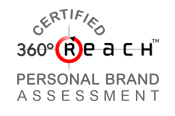 Have you given culture much thought? Seventy-five percent of the executives I work with rank culture more important than pay.
Have you given culture much thought? Seventy-five percent of the executives I work with rank culture more important than pay.
Is the culture of an organization important to you? Are you struggling to discover a company’s culture?
If you are looking for a promotion, new position or considering a career transformation and fit is important to you, may I suggest you give some thought to culture. Start by think about the culture of your current or last company.
I believe there are two critical things to understand about an organization’s culture: (1) all organizations have a desired culture and (2) an actual culture.
Often there is a big difference between the desired culture and the actual culture. This may be because the organization is growing and changing. Culture does not usually change fast. Organizations in transition may also have teams or key leaders wearing grey or rose-colored glasses.
Here are proven steps to researching and discovering company culture:
- Begin by recording your view of the company culture. Note why you have this view, then note the evidence that supports your view.
- Look for and read about what the organization states about its culture. Note your sources, then note the behaviors and actions that indicate there is evidence of the stated culture.
- Connect with and ask a representative sample of people within the organization about the culture. Note what your sample tells you. Realize that cultures have sub-groups or sub-cultures. Be sure to gather data from a diverse group of people or you may only discover part of the culture.
- Connect with and ask vendors and customers about the culture of the organization. Realize that cultures have layers and may look and feel different from various angles or points of view. Again note what you are told.
- List what you discovered about the culture. Verify your data. Determine what you have learned about the culture. Note how you fit (or don’t) into the culture you discovered.
Don’t forget company cultures evolve and change at a pace different than many other elements of business. Be careful if you are only talking to people who ‘once upon a time’ worked or did business with the organization. As you review your notes, think about the key factors that influence a company’s culture: growth rate, age of the company, industry norms, competitiveness, company strategy and supporting tactics.
Also, culture is influenced by the leadership and management style of those you work for and the job itself. The culture of an IT department may differ from the culture of an accounting department.
In five simple steps you have collected the data to discover and analyze the culture of a company you are interested in joining. When your transformation includes finding a specific culture or if culture in general is important to you, this data is helpful.
Will you invest the time and resources to discover some of the key components of the company’s actual culture? If you need help removing your culture blinders, assessing where you fit, or seeing the blind spots that tripped you up in the past, let’s talk.
Have an amazing week!



Cindy! You are so right – cultural fit is the key (hee hee) to job satisfaction. But I think people don’t take it into consideration before accepting a position with a company.
Your process for discovering a company’s culture would be a great exercise for a company to do, too. Often the leaders of an organization believe that the company has a certain culture, while the majority of the staffers experience a different culture. It would also be an important exercise for merger or acquisition targets. Poor cultural fit is one of the biggest causes of M & A failures.
Lori, great insight. Your are correct poor cultural fit is one of the big causes of M & A failures. Poor cultural fit is also often stated as “don’t like boss” as boss may be the person that represents the cultural.